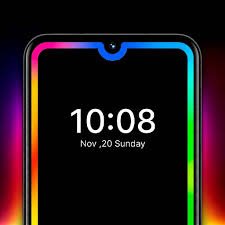Introduction
In the ever-evolving landscape of technology, the quest for innovation in lighting has led to the development of cutting-edge solutions that not only illuminate spaces but also redefine aesthetics. One such innovation is Edge Lighting technology, a groundbreaking approach that has been gaining traction in various industries. This article delves into the world of Edge Lighting, its principles, applications, and the impact it has on the way we perceive and interact with light.
Understanding Edge Lighting
Edge Lighting is a sophisticated lighting technique that leverages the principles of total internal reflection. Unlike traditional lighting sources that emit light from a central point, Edge Lighting uses the edge of a transparent or semi-transparent material to distribute light evenly across a surface. This innovative approach creates a visually stunning and uniform illumination effect.
How Edge Lighting Works
At the heart of Edge Lighting is the principle of total internal reflection, which occurs when light strikes the boundary of a material at an angle greater than the critical angle. In this scenario, instead of passing through the material, light reflects off the surface, effectively trapping it within. This trapped light then travels along the material’s edge, gradually escaping in a controlled manner through diffusing layers or other mechanisms. This controlled release of light produces an even and soft illumination effect.
Applications of Edge LightingArchitectural Lighting:
Edge Lighting is transforming the way buildings are illuminated. It allows architects and designers to create stunning lighting installations that can be integrated seamlessly into building structures. The technology is often used in facades, interior spaces, and even in creating captivating signage.
Displays and Monitors:
Edge-lit displays have become increasingly popular in the consumer electronics industry. The thin, sleek design of edge-lit LED TVs and monitors not only saves space but also offers a more immersive viewing experience.Automotive Lighting: In the automotive industry, Edge Lighting is used to enhance the aesthetics of vehicles. It’s commonly seen in modern car interiors, illuminating instrument clusters, center consoles, and ambient lighting to create a futuristic and stylish look.
Retail and Hospitality:
Edge Lighting has found its way into retail environments, hotels, and restaurants to create inviting and dynamic atmospheres. It can be used to highlight products, create decorative lighting effects, or set the mood in various spaces.
Benefits of Edge LightingUniform Illumination:
Edge Lighting delivers even and consistent lighting across surfaces, reducing glare and enhancing visual comfort.
Energy Efficiency:
This technology typically consumes less energy compared to traditional lighting methods, making it an eco-friendly choice.
Aesthetics:
Edge Lighting opens up a world of creative possibilities for designers, enabling the creation of visually stunning and unique lighting installations.
Space-Saving:
The slim and compact design of Edge Lighting solutions saves space, making it ideal for applications where space is limited.
Conclusion
Edge Lighting represents a revolution in the world of illumination, offering a versatile and visually striking approach to lighting design. Its applications span across various industries, from architecture to consumer electronics, and its benefits extend beyond aesthetics to energy efficiency and user experience. As technology continues to advance, we can expect Edge Lighting to play an increasingly prominent role in shaping the way we light our world, offering innovative solutions that blend functionality with artistic expression.




